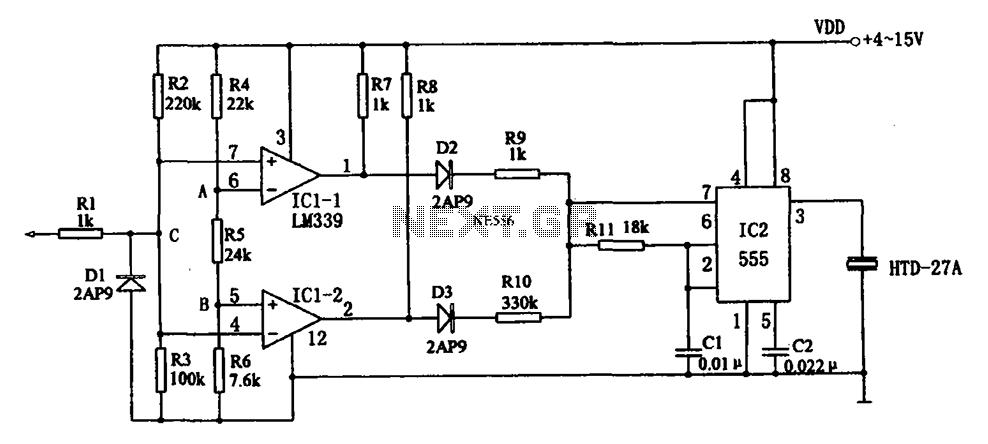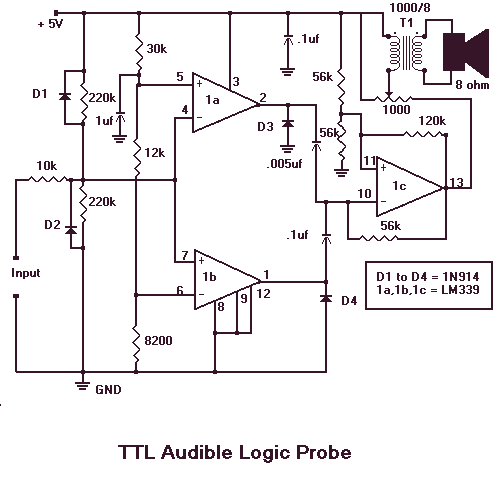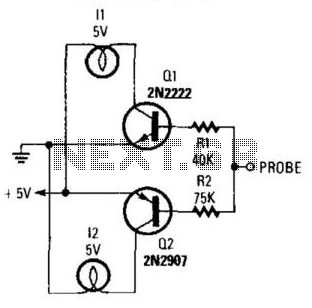
Logic Probe for Tri-state Logics

This is a simple circuit of a Logic Probe for tri-state logic. This circuit can be built in just a few hours. Additionally, this circuit has other features.
The Logic Probe circuit for tri-state logic is designed to detect and indicate the state of digital signals in a circuit that can exist in three different states: high, low, and high-impedance (or tri-state). This is particularly useful for troubleshooting digital circuits where multiple devices may share a common bus.
The basic components of a Logic Probe circuit typically include a microcontroller or logic gates, resistors, diodes, and LEDs for visual indication. The circuit operates by applying the input signal to a comparator, which determines the voltage level of the signal. If the signal is high (logic 1), the corresponding LED will illuminate, indicating a high state. Conversely, if the signal is low (logic 0), another LED will light up to indicate a low state. In the case of a high-impedance state, the circuit will not activate either LED, allowing the user to identify the tri-state condition.
Power supply considerations must also be addressed, as the circuit usually requires a stable voltage source, typically between 5V to 15V, depending on the logic levels being monitored. The design can be compact, often implemented on a small printed circuit board (PCB) to facilitate portability and ease of use.
Additionally, protective components such as current-limiting resistors and clamping diodes may be included to prevent damage to the circuit from over-voltage conditions. The Logic Probe can be an invaluable tool in debugging and validating the functionality of digital systems, providing clear visual feedback on the state of the signals being monitored.This is a simple circuit of Logic Probe for Tri-state Logics. This circuit can be built only in a few hours. Besides that, this circuit has some other. 🔗 External reference
The Logic Probe circuit for tri-state logic is designed to detect and indicate the state of digital signals in a circuit that can exist in three different states: high, low, and high-impedance (or tri-state). This is particularly useful for troubleshooting digital circuits where multiple devices may share a common bus.
The basic components of a Logic Probe circuit typically include a microcontroller or logic gates, resistors, diodes, and LEDs for visual indication. The circuit operates by applying the input signal to a comparator, which determines the voltage level of the signal. If the signal is high (logic 1), the corresponding LED will illuminate, indicating a high state. Conversely, if the signal is low (logic 0), another LED will light up to indicate a low state. In the case of a high-impedance state, the circuit will not activate either LED, allowing the user to identify the tri-state condition.
Power supply considerations must also be addressed, as the circuit usually requires a stable voltage source, typically between 5V to 15V, depending on the logic levels being monitored. The design can be compact, often implemented on a small printed circuit board (PCB) to facilitate portability and ease of use.
Additionally, protective components such as current-limiting resistors and clamping diodes may be included to prevent damage to the circuit from over-voltage conditions. The Logic Probe can be an invaluable tool in debugging and validating the functionality of digital systems, providing clear visual feedback on the state of the signals being monitored.This is a simple circuit of Logic Probe for Tri-state Logics. This circuit can be built only in a few hours. Besides that, this circuit has some other. 🔗 External reference





